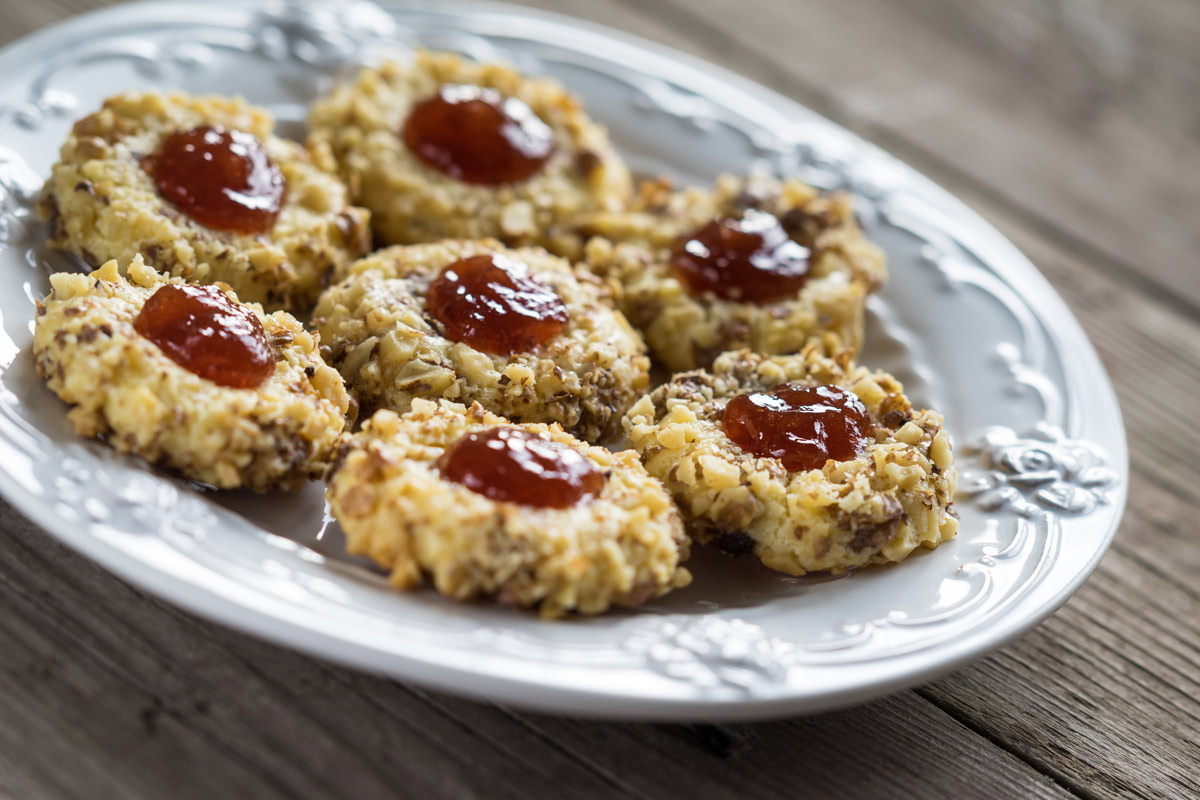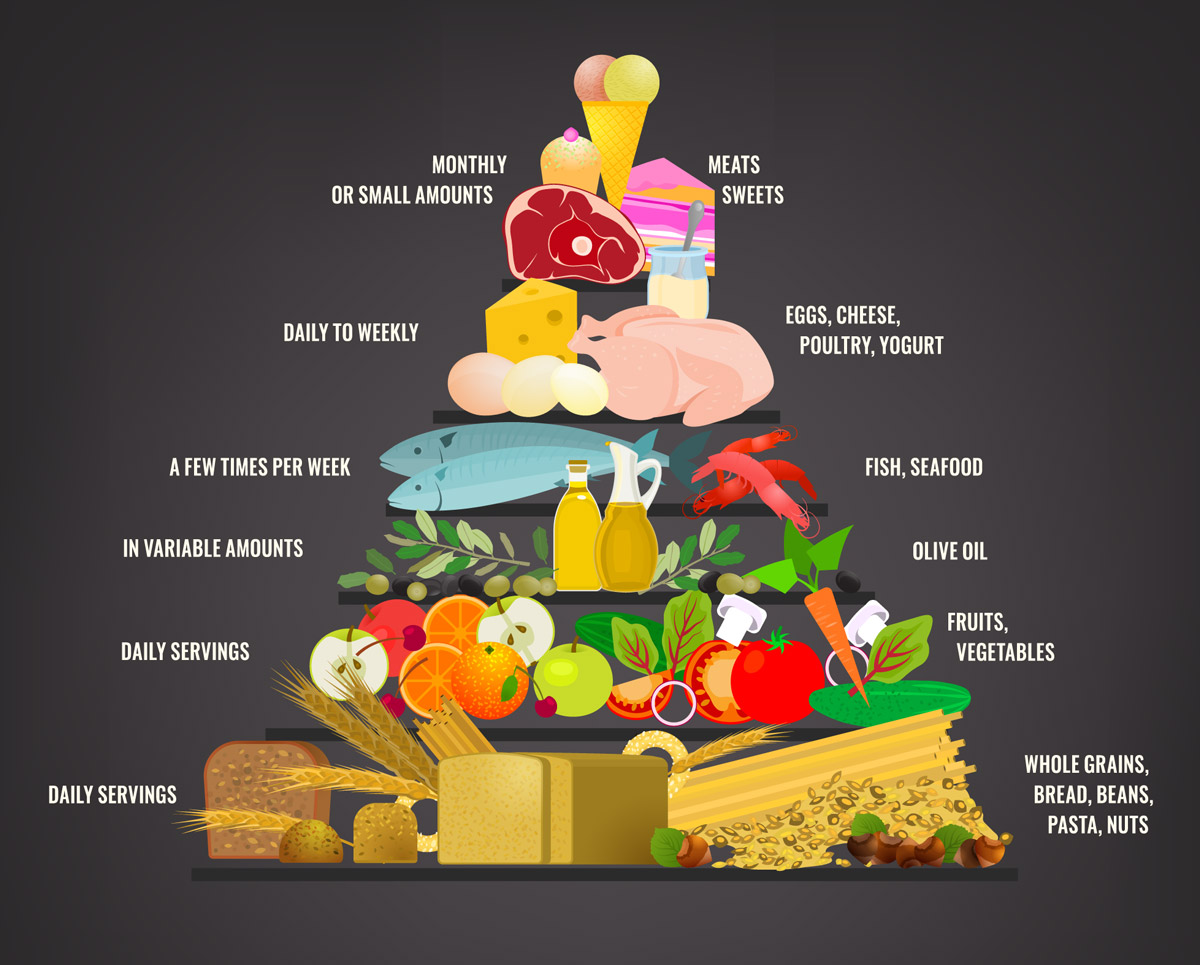Mini Pistachio Thumbprint Cookies Recipe, For Your Best Health: The Mediterranean Diet (Still No. 1)
Among the most important news items I share in this newsletter are results of scientific studies on the benefits of olive oil and, in a larger context, the Mediterranean diet. I love to report on research that shows how this way of eating—and living—has positive impacts on heart and brain health and can help ward off serious chronic diseases including diabetes and dementia.
It’s also rewarding to see how the diet has been adopted here in the US and how many of our esteemed institutions, such as the American Heart Association and the Cleveland Clinic, recommend it. An annual survey that so many people appreciate reading is the U.S. News & World Report’s ranking of dietary plans or “Best Diets.” And for the seventh year in a row the Mediterranean diet triumphs in the top spot. I’ll detail the highlights of the magazine’s reasoning right after this delicious recipe for cookies you can enjoy guilt-free—in moderation, of course.
Mini Pistachio Thumbprint Cookies
 Mini Pistachio Thumbprint Cookies
Mini Pistachio Thumbprint CookiesWith a minimal amount of sugar, these cookies pack all the heart-healthy benefits of nuts, a key food—along with extra virgin olive oil—of the Mediterranean diet. Though sweets are the smallest food group on the Mediterranean diet food pyramid, we know that an occasional treat can help us stay on track with this healthful way of eating. This recipe shows that you don’t have to make huge sacrifices to enjoy it.
Ingredients
- 1 cup shelled pistachios
- 1-1/2 cups almond flour
- 1/2 cup granulated sugar
- 2 large egg whites
- 1/4 teaspoon sea salt
- 2 tablespoons extra virgin olive oil
- 1/2 teaspoon almond extract
- 1 teaspoon vanilla extract or paste
- 1/4 cup raspberry or apricot all-fruit (no sugar added) preserves, such as Polaner or St. Dalfour
Directions
Step 1
Preheat your oven to 350°F. Line two rimmed sheet pans with parchment paper. Use a spice or coffee bean grinder to pulverize the pistachios (you may need to do this is batches). Transfer to a large bowl along with the almond flour and sugar, and mix thoroughly.
Step 2
In a stand mixer or large bowl with a hand mixer, beat the egg whites and salt at a low speed until frothy, then increase the speed and beat until you get soft peaks. Briefly whip in the olive oil and the extracts. Fold the whites into the nut mixture with a large spatula until fully combined. The dough will be very firm.
Step 3
Using a 1-inch ice cream scoop or melon baller, make dough balls and evenly space them on the parchment-lined pans. Use your thumb to make an indentation in the top of each cookie, flattening the centers and then filling each with a half-teaspoon or so of preserves.
Step 4
Bake just until set, about 15 minutes, rotating the pans halfway through. Wait 5 minutes before transferring the cookies to a rack to cool. When completely cooled, store in an airtight tin.
Yields about 44 cookies

For Your Best Health
The Mediterranean Diet: Still No. 1
According to the U.S. News & World Report 2024 rankings, created in partnership with The Harris Poll and with input from a panel of leading health experts, the Mediterranean diet has once again taken the No. 1 spot in the Best Diets Overall category, thanks to its focus on diet quality and primarily plant-based foods. The Mediterranean diet also claimed the top spot in the categories Best Diets for Diabetes, Best Heart-Healthy Diets, Easiest Diets to Follow, Best Diets for Bone and Joint Health, Best Family-Friendly Diets, and Best Diets for Healthy Eating, and the No. 2 spot in the Best Weight Loss Diets and the Best Plant-Based Diets categories.
One of the reasons it’s both adoptable and adaptable is that there are so many cuisines to choose from when looking for recipes. Dishes that are popular in Turkey and Greece will offer different tastes than those from Italy, France, or Spain or from Morocco and other North African countries. But the unifying elements are the same: the emphasis on vegetables, fruits, extra virgin olive oil, nuts, whole grains, legumes, herbs, spices, and other plant-based foods that leave you feeling satisfied; minimal food processing; and a convivial atmosphere in the kitchen and at the table.
The Mediterranean diet also ranks high for what it leaves out:saturated fat, added sugars, and excess salt—all so prevalent in the typical American diet and so likely to leave you wanting more because foods with a low-nutrient profile are not truly satisfying. Eating them regularly also poses health risks. Eating a Mediterranean-style diet, on the other hand, translates to a longer life, a higher quality of life, and a lower risk of chronic diseases such as cancer, dementia, and heart disease.
The Mediterranean diet food pyramid is a great way to visualize the foods to focus on and how often to eat them. Whole grains, legumes, vegetables, fruit, and olive oil make up most of your daily intake. Seafood can be enjoyed a few times a week; animal proteins like poultry, eggs, cheese, and yogurt less often; and red meat less often still. But you also have a lot of leeway, so you don’t need to feel guilty about eating foods not on the pyramid. Nothing is totally eliminated, though you’re advised to eat foods like sugary desserts, butter, heavily processed foods like frozen meals, candy, and refined grains and oils sparingly.

To get started on the Mediterranean diet, or to more closely follow it, U.S. News & World Report suggests these tips:
- Think of meat as your side dish and whole grains or vegetables as your main dish.
- Look beyond Greek and Italian cuisines for inspiration—in all, 22 countries border the Mediterranean Sea!
- As with any diet, do some advance meal planning so you won’t be tempted by convenience foods after a long day at work. For instance, cook up a batch of grains or lentils on the weekend to use for meals throughout the following week.
- Make water your main source of hydration. Wine is considered optional and then only in moderation—one to two glasses per day for men and one glass per day for women.
